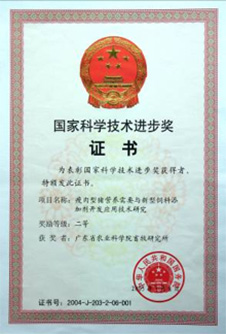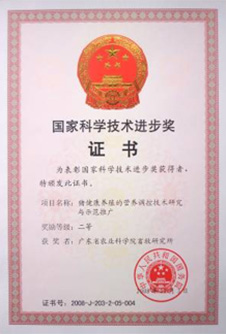Key technology of intestinal health regulation of Piglets and its application in feed industrialization
This achievement has led to the development and industrialization of key technologies and related products for regulating the intestinal health of piglets, including: identifying the important factors affecting the intestinal health of piglets: molecular biological mechanisms; Reveal the piglets intestinal health control key mechanisms: found arginine family class material by influencing the ARG - NO - HSP70, MTOR and intestinal vascular endothelial growth factor signaling pathways regulating intestinal antioxidant and mucosal immune function, promote the growth of intestinal mucous membrane protein synthesis and blood vessels, and alleviate intestinal injury: establish piglets intestinal health control key technology, Form new feed additives and a series of Suckling piglet feed products and industrialization.
Research and application on regulation of nitrogen and phosphorus metabolism of livestock and poultry and key technology of safe feed preparation
In this study, the regulation of nitrogen and phosphorus metabolism in pigs, the influence mechanism of carbohydrates, and the regulation mechanism and technology of bioactive substances regulating ammonia and phosphorus metabolism were studied, and five key technology evaluation methods were established for nutrient metabolism and optimal regulation of livestock and poultry. The database of true n and P digestibility of pig feed, prediction model, requirement parameters and environmental safety nutrition technology system of low N and low P pig feed were constructed.
Study and demonstration of nutrition regulation technology in pig healthy breeding
This research is the first in China to establish a pig immune stress model, study the regulation mechanism of important nutrients such as dietary amino acids and fatty acids on immune function and intestinal health, and improve the measurement method of nutrient utilization of pig feed, and measure the nutritional value of 62 kinds of digestible energy, 3 kinds of new feed and 21 kinds of unconventional protein feed.
Study on nutritional Requirements of lean pigs and development and Application technology of New feed additives
The results carried out in-depth and systematic research on the nutritional needs of lean pigs, and put forward the nutritional needs standard of lean pigs. By adopting the nutritional needs standard of this project, the feeding effect reached the feeding effect of NRC and nutritional needs model of the United States. 24 optimal utilization technical parameters of feed additives were put forward, 24 new feed additives and compound premix products were developed, and the industrialization production technology of ferrous fumarate replacing iron amino acid was first developed, and the production cost was reduced by 90%.
Study on industrialization of high quality broiler chickens
As a result, the largest high-quality broiler germplasm resource bank in China has been built, a high-quality broiler breeding system has been established, 4 high-quality yellow-feathered short and small specialized lines containing DW gene have been cultivated, and 15 new high-quality broiler varieties suitable for market demand have been developed. Among them, Four supporting lines, including Lingnan Yellow Chicken I, Lingnan Yellow Chicken II, Xinxing Yellow Chicken and Xinxing bantam yellow chicken, have passed the national new breed of livestock and poultry.
Research and promotion of key technology of pig high quality and high efficiency feed industrialization
Through 11 years of research, this achievement achieved a major breakthrough in the key technology of pig feed industrialization. The mechanism of increasing pig protein deposition by ideal protein was found, the technology of preparing balanced diet by ideal protein was developed, and the five physiological stages of digestible amino acid balance model of typical genotype pigs in North China, South China, Northeast China and central South China were established. A system for the determination of amino acids and synthetic amino acids in feed was established, and a method for the determination of apparent amino acids and true digestibility of ileal amino acids in animal feed, grain feed and legume feed was established, which improved the accuracy of the determination results.










